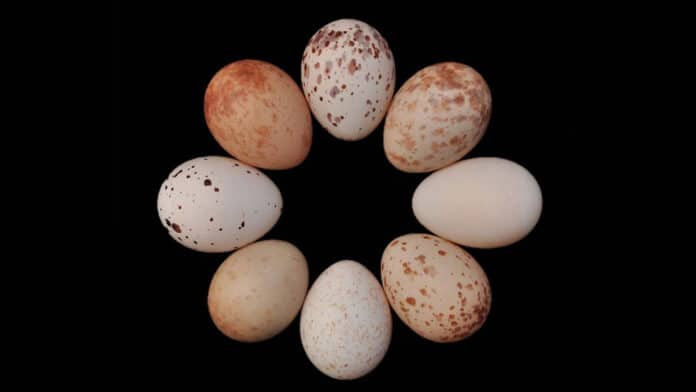Sub-Saharan African cuckoos are aggressive birds laying eggs in various colors and patterns. The African cuckoo creates these hues and patterns when it lays its eggs in drongo nests rather than raising the chick alone.
Cuckoos trick drongos into believing their eggs are being used by imitating their hues and patterns. According to researchers, drongos can recognize cuckoo egg “forgeries” and reject them from their nests by using knowledge of their own unique egg “signatures,” such as the color and pattern of their eggs. Similar to the signatures we use daily, these are both highly reproducible by the same person and particular to each individual.
The African cuckoo’s eggs have developed to look nearly identical to drongo eggs due to natural selection, a rare example of high-fidelity mimicry in nature.
Researchers from the Universities of Cambridge and Cape Town set out to investigate the efficiency of signatures as a defense against very exact mimicry in conjunction with a community in Zambia. They discovered that, despite near-perfect mimicry of fork-tailed drongo eggs, African cuckoo eggs are still rejected at a high rate.
The researchers performed field research in Zambia’s Choma area from September to November across four years. The initial stage was to compare the hue and pattern of fork-tailed drongo and cuckoo eggs. The scientists discovered that the color and pattern of cuckoo eggs were almost identical to that of drongo eggs. The cuckoos falsified all the major categories of drongo egg signatures.
Lead researcher and Zoology Ph.D. student Jess Lund said, “It is incredible how perfect the mimicry is. We have occasionally missed cuckoo eggs in the field because they looked exactly like the drongo clutch that they were found in.”
The second phase was ‘egg rejection’ studies. The researchers imitated cuckoo visits by ‘parasitizing’ drongo nests with foreign eggs from other drongo nests (as a proxy for African cuckoo eggs). They then checked the nest regularly to see if the drongo parents accepted the foreign egg as their own or realized it was a forgery and rejected it by removing it from their nest. The researchers could then determine which changes in color and pattern between the foreign egg and the drongo’s eggs best predicted whether or not the drongo parents had been duped.

The researchers constructed a model that predicted how often a fork-tailed drongo host would reject an African cuckoo’s eggs by incorporating the information from both investigation steps. They discovered that the projected rejection rate was 93.7%.
The researchers combined the information from both rounds of the inquiry to create a model that predicted how frequently a fork-tailed drongo host would reject an African cuckoo’s eggs. The researchers think the fork-tailed drongos where the research occurred could be particularly good at spotting forgeries.
He said, “Perhaps this part of Zambia is a hotspot for parasitism, where drongos have particularly fine-tuned defenses against which cuckoos stand little chance.”
The FitzPatrick Institute at the University of Cape Town, the BBSRC, the Royal Society, and the Department of Zoology at the University of Cambridge all funded the study.
Journal Reference:
- Lund Jess, Dixit Tanmay, etal. When perfection isn’t enough: host egg signatures are an effective defense against high-fidelity African cuckoo mimicry. Proceeding of Royal Society B. DOI: 10.1098/rspb.2023.1125
